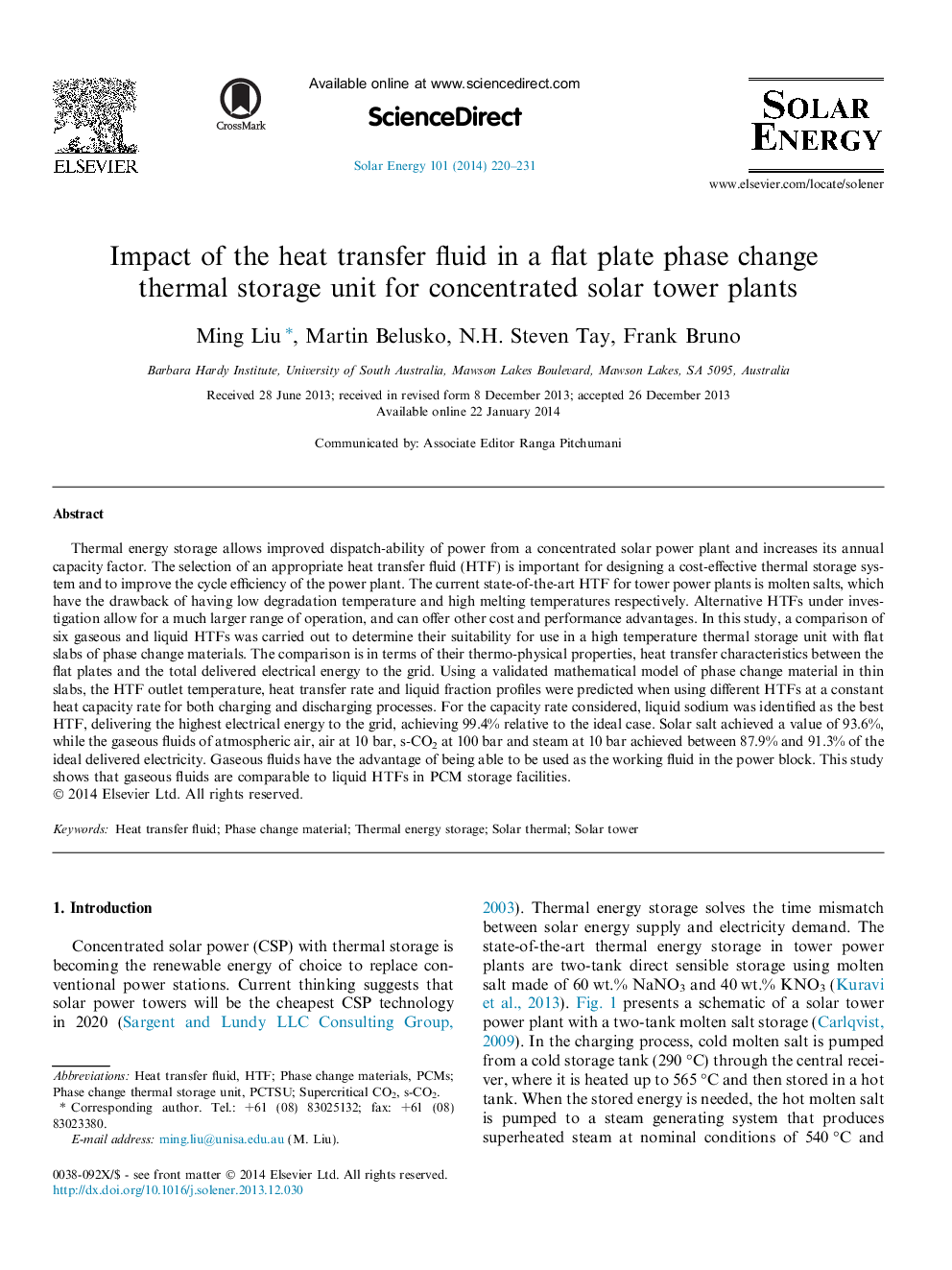| کد مقاله | کد نشریه | سال انتشار | مقاله انگلیسی | نسخه تمام متن |
|---|---|---|---|---|
| 1550179 | 1513117 | 2014 | 12 صفحه PDF | دانلود رایگان |
• Liquid sodium has a quite high convection heat transfer coefficient.
• Liquid sodium delivered the highest electrical energy to grid −99.4% relative to the ideal case.
• Gaseous HTFs achieved 87.9–91.3% of the ideal delivered electricity.
Thermal energy storage allows improved dispatch-ability of power from a concentrated solar power plant and increases its annual capacity factor. The selection of an appropriate heat transfer fluid (HTF) is important for designing a cost-effective thermal storage system and to improve the cycle efficiency of the power plant. The current state-of-the-art HTF for tower power plants is molten salts, which have the drawback of having low degradation temperature and high melting temperatures respectively. Alternative HTFs under investigation allow for a much larger range of operation, and can offer other cost and performance advantages. In this study, a comparison of six gaseous and liquid HTFs was carried out to determine their suitability for use in a high temperature thermal storage unit with flat slabs of phase change materials. The comparison is in terms of their thermo-physical properties, heat transfer characteristics between the flat plates and the total delivered electrical energy to the grid. Using a validated mathematical model of phase change material in thin slabs, the HTF outlet temperature, heat transfer rate and liquid fraction profiles were predicted when using different HTFs at a constant heat capacity rate for both charging and discharging processes. For the capacity rate considered, liquid sodium was identified as the best HTF, delivering the highest electrical energy to the grid, achieving 99.4% relative to the ideal case. Solar salt achieved a value of 93.6%, while the gaseous fluids of atmospheric air, air at 10 bar, s-CO2 at 100 bar and steam at 10 bar achieved between 87.9% and 91.3% of the ideal delivered electricity. Gaseous fluids have the advantage of being able to be used as the working fluid in the power block. This study shows that gaseous fluids are comparable to liquid HTFs in PCM storage facilities.
Journal: Solar Energy - Volume 101, March 2014, Pages 220–231
